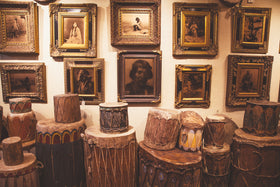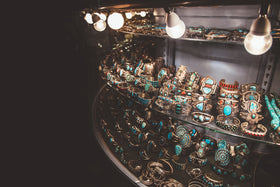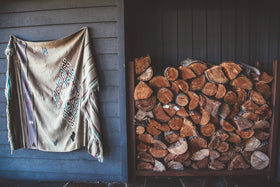Artist and Photographer - Carl Moon


Carl Moon was an American photographer best known for his portraits of Native Americans in New Mexico, Arizona and Oklahoma. Like his contemporary Edward S. Curtis, Moon sought to document the cultural practices of the Hopi, Apache, and Navajo tribes in their home territory.
Born Karl Everton Moon, 1879 he was fascinated by Native American culture as a boy and often read the adventure stories of James Fenimore Cooper. Moving to Albuquerque in 1903, Moon began photographing and painting the local Pueblo people.
Moon had a modest, unassuming, cheerful and buoyant personality evident in his work. Simplicity and force of character, free from intrusion of deformity or vulgarity, emphatically marks his art of creating pictures that present clearly to the camera and brush. Seen from a purely ethological point of view his photographic studies are of inestimable and permanent value to scientific research.

During his career, he acted as the official photographer for the Santa Fe Railroad and sold his photographs for advertising purposes to major companies including Stetson Hats, Seneca Coal Mining, Buffalo Bill Cody Wild West Shows, American Lumber Co., Red Carter Saloon, and Wells Fargo.
Moons portraits became famous around 1906 when the National Museum in Washington D.C. invited him to exhibit his photographs in the Bureau of Ethnology even before the museum was constructed. The exhibit was displayed at the American Museum of Natural History, N.Y and at the Cosmos Club, an exclusive art club in Washington D.C. While moon was in the Nations Capitol, he was elated to learn that President Theodore Roosevelt had invited him to exhibit his photographs at the White House. This compliment was an exceptionally important event to happen to a young American artist and it doubtless helped to further Moon’s career.
Soon after President Theodore Roosevelt left office, he was sent to the Smithsonian Institute to collect specimens for their new museum. The museum officials felt he was a good choice since this was his type of work and was an avid hunter. Roosevelt who was a close friend Moon wanted Moon to accompany him. The two were accomplished hunters and keen outdoorsmen. Moon took advantage of the trip and brought along his camera taking hundreds of photos of the hunt, in which 296 big game animals were brought down including nine lions.
During his travels to the Apache country in 1910 Moon met many of the important Apaches of the day and while in Oklahoma, befriended Magnus, Geronimo and Al-che-say.
“The Cowboy Artist”, Charles M. Russell met Moon in New York and soon found they had many things in common. They both loved and lived with the Indians, and both collected Indian artifacts and were Indian artists. When Russell bought some of Moon’s photographs, he was then given some as a gift. Russell was so impressed with Moon’s gesture that he gave moon some his sketches and a friendship developed.

Credit: California Faces: Selections from The Bancroft Library Portrait Collection
Moon who was friends with John Burroughs and John Muir had the distinct advantage of taking their portraits while they were at the Grand canyon in 1911. These great men were united again on this momentous occasion, and upon their departure Moon gave both a group of his Indian photographs and a keepsake of their reunion.
In 1913 J. P. Morgan came across Moon’s display of paintings, photographs and southwest artifacts at the American Museum of Natural History. Morgan was so impressed he bought Moon’s photographs for his private collection. It was Morgan who generously financed E.W. Curtis with his work realizing the importance of preserving the culture of the Indian.
"A number of very capable critics, who have been in Albuquerque quite recently, have been comparing Moon’s Indian photographs with those of Curtis, the famous Indian photographer; the comparison in all cases having been to the advantage of the Albuquerque man.” – The Albuquerque Herald, c. 1904.

Credit: Indians of the Southwest by Carl Moon, Library of Congress
Despite most white settlers insensitive attitude towards Native Americans, Moon’s photos and paintings evince a deep empathy towards his subjects. Settling in Pasadena, the artist published his four-volume book Indians of the Southwest, in 1936. He died on June 24, 1948 in San Francisco, CA.
Today, Moon’s works are held in the collections of the J. Paul Getty Museum in Los Angeles, the Smithsonian American Art Museum in Washington, D.C., and the Metropolitan Museum of Art in New York, among others.
Carl Moon produced a few of his finest photographs as “orotones” or “goldtones”, a process that produced images of striking depth and transparency.
Reference
Driebe, Tom. In Search of the Wild Indian. Photographs and Life Works by Carl and Grace Moon. 1997. Maurose Publishing Co.
Cisco's has a large number of authentic Carl Moon Orotones. Click here to view our complete collection!




